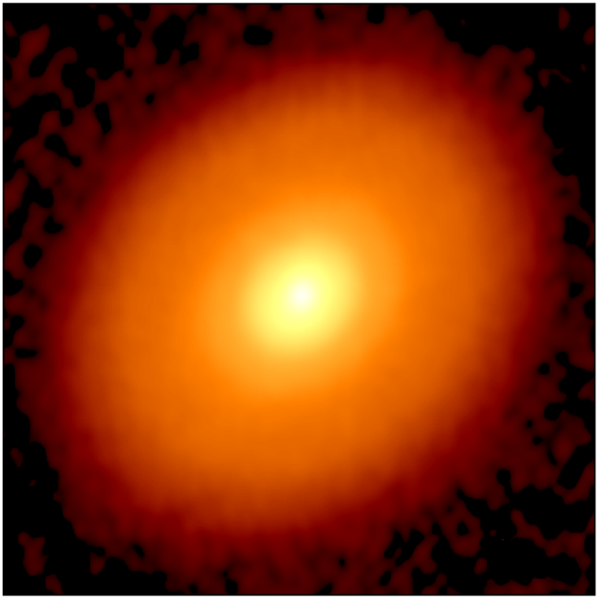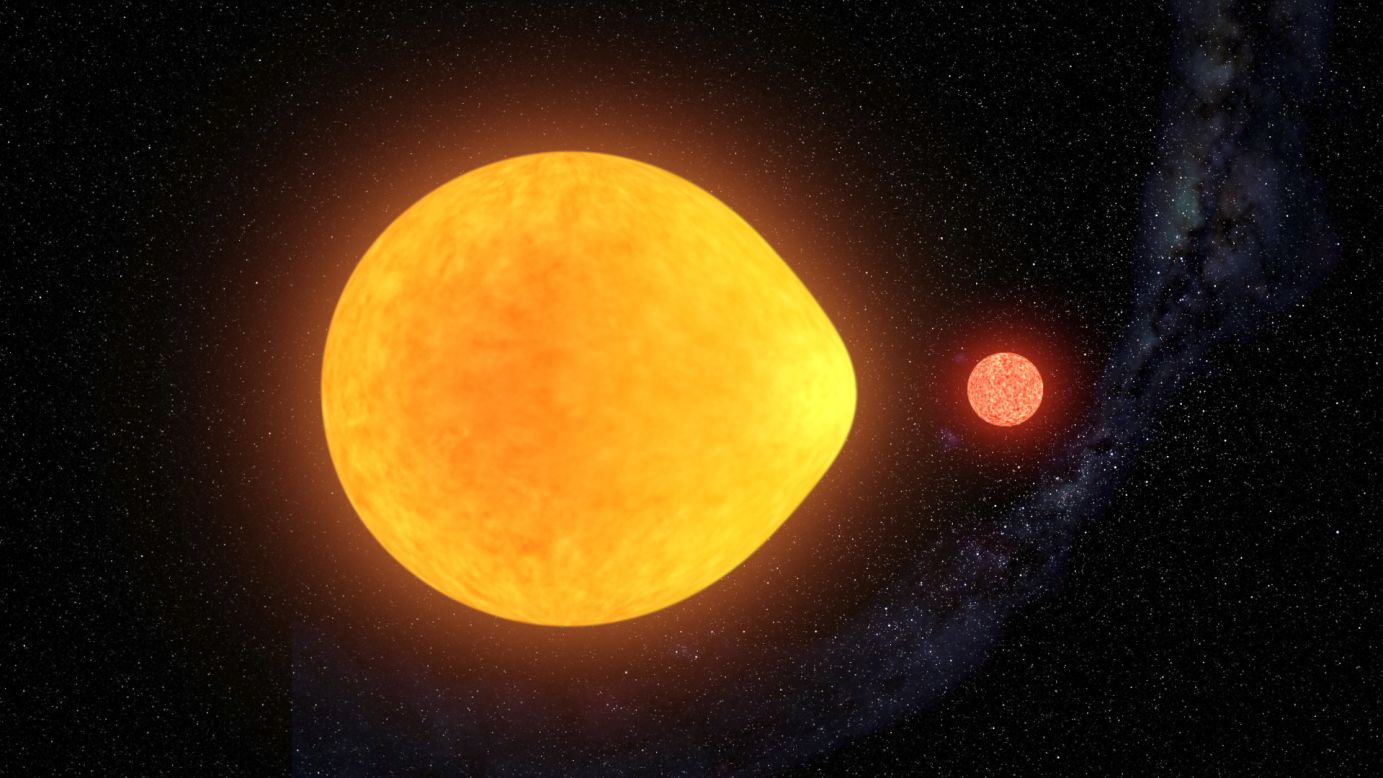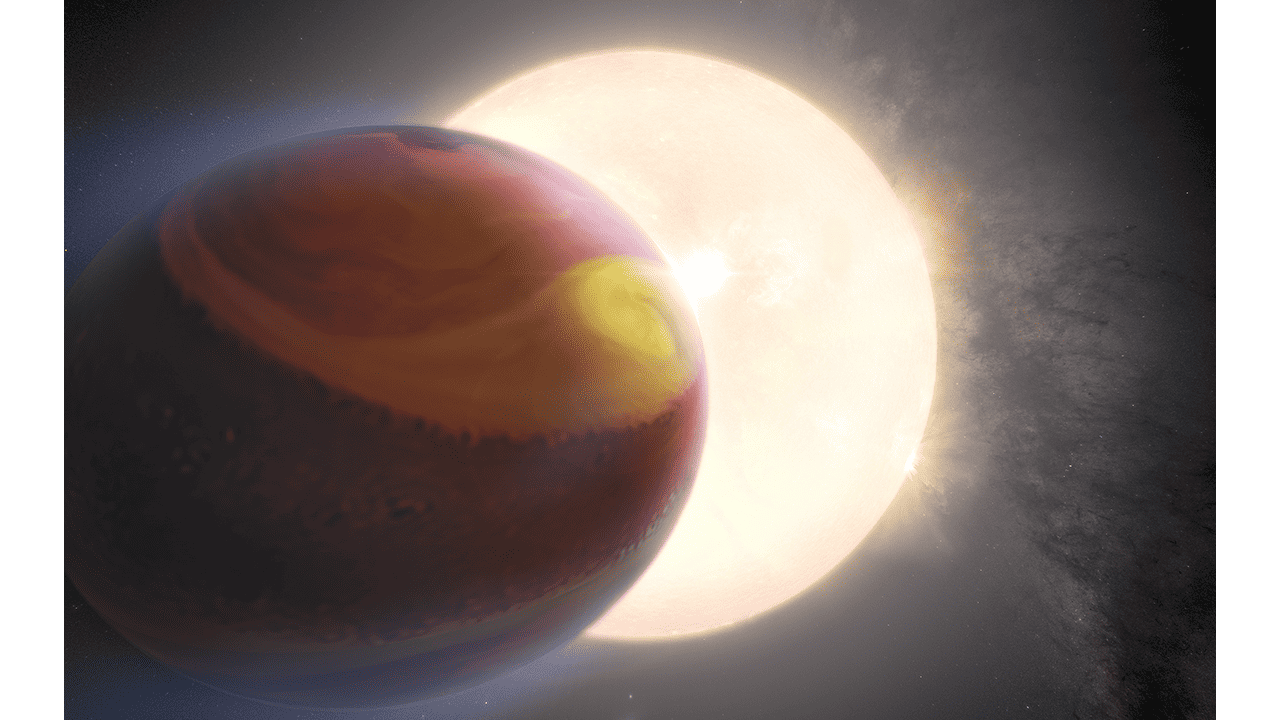Red dwarfs are smaller and cooler stars, while yellow dwarfs are larger and hotter stars. Red dwarfs are the most common type of star in the universe, emitting a faint red glow.
On the other hand, yellow dwarfs, like our Sun, shine with a yellowish-white light. Despite their differences in size and temperature, both types of stars play crucial roles in the formation and evolution of galaxies and solar systems. Understanding the characteristics and behavior of red and yellow dwarfs can provide valuable insights into the vastness and diversity of the cosmos.
Moreover, studying these stars can help scientists unravel the mysteries of stellar life cycles and the potential for habitable planets around them. Let’s delve deeper into the fascinating world of red and yellow dwarfs to grasp their significance in the cosmic tapestry.

Credit: www.almaobservatory.org
Formation And Characteristics
Red Dwarf Vs Yellow Dwarf stars differ in formation and characteristics.
Formation Of Red Dwarfs
- Red Dwarfs form through the contraction of gas clouds.
- This process triggers nuclear fusion, but at a slower rate.
- They have low mass compared to other stars.
Characteristics Of Red Dwarfs
- Red Dwarfs are long-lived, shining faintly for billions of years.
- They are the most common type of star in the universe.
- These stars are smaller and cooler than Yellow Dwarfs.
Formation Of Yellow Dwarfs
- Yellow Dwarfs form from massive gas clouds that collapse under gravity.
- This collapse triggers nuclear fusion at a higher rate than red dwarfs.
- They have a moderate mass compared to other stars.
Characteristics Of Yellow Dwarfs
- Yellow Dwarfs, like our Sun, have a moderate lifespan of billions of years.
- They emit a yellowish light due to their surface temperature.
- These stars are larger and hotter than Red Dwarfs.
Life Cycle
In the vast universe, red dwarfs and yellow dwarfs are two common types of stars with distinct life cycles. Let’s explore the fascinating journey of these stars from birth to eventual demise.
Life Cycle Of Red Dwarfs
- Form from collapsing gas and dust.
- Convert hydrogen to helium via nuclear fusion.
- Stable fusion for billions of years.
- Eventually cool and fade into white dwarfs.
Life Cycle Of Yellow Dwarfs
- Originate from gas and dust condensation.
- Begin fusion of hydrogen to form helium.
- Shine brightly for several billion years.
- Expand into red giants before collapsing to white dwarfs.
Planetary Systems
Planetary systems play a crucial role in understanding the diversity of stars and their impact on orbiting planets. While Red Dwarf and Yellow Dwarf stars are known for their significance in the universe, each type presents distinct characteristics in their planetary systems. Let’s delve into the specifics of the planetary systems orbiting around these two types of stars.
Red Dwarf Planetary Systems
Red Dwarf stars are known for their small size and low luminosity, which affects the planetary systems orbiting around them. Due to the close proximity of planets to Red Dwarf stars, these systems often show evidence of tidally locked planets and heightened solar flare activity. Additionally, the habitable zone around a Red Dwarf star is much closer compared to other types of stars, impacting the potential for life on orbiting planets.
Yellow Dwarf Planetary Systems
Yellow Dwarf stars, like our sun, host a diverse range of planetary systems. The habitable zone around a Yellow Dwarf star is further from the star, allowing for a wider range of potential for life on orbiting planets. Planetary systems around Yellow Dwarf stars often exhibit a mix of terrestrial and gas giant planets, contributing to the complexity of these systems.

Credit: www.cnn.com
Habitability And Potential For Life
One of the key considerations when exploring the possibility of life beyond earth is the habitability of different types of stars. In particular, scientists are interested in understanding the potential for life on planets orbiting red dwarfs and yellow dwarfs. These two types of stars, although similar in some ways, have distinct characteristics that can greatly impact the conditions for habitability. Let’s explore the habitability of planets orbiting red dwarfs and yellow dwarfs in more detail:
Habitability Of Planets Orbiting Red Dwarfs
Red dwarfs are the most common type of star in the galaxy, and many exoplanets have been discovered in orbit around them. The habitability of planets orbiting red dwarfs is an intriguing area of research because these stars are smaller and cooler compared to yellow dwarfs like our Sun. Despite their smaller size, red dwarfs can potentially provide a stable environment for habitation. Their long lifespans, often lasting billions of years, allow for a greater chance of life to develop and evolve.
However, there are several challenges associated with the habitability of planets orbiting red dwarfs. The proximity of these planets to their stars leads to gravitational forces that can cause tidal locking, where one side of the planet always faces the star. This could result in extreme temperature differences and disrupt the development of a stable atmosphere. In addition, red dwarfs are known to be more active and emit higher levels of radiation compared to yellow dwarfs, which could be harmful to potential life forms.
Habitability Of Planets Orbiting Yellow Dwarfs
Yellow dwarfs, like our Sun, are intermediate-sized stars that offer their own set of advantages and challenges for habitability. The planets orbiting yellow dwarfs have a wider habitable zone that allows for a more comfortable temperature range. This increases the likelihood of liquid water, a crucial ingredient for life as we know it, to exist on these planets. The stable conditions provided by yellow dwarfs are advantageous for the development and sustainability of complex life forms.
While yellow dwarfs offer seemingly better habitability conditions, their lifespans are shorter compared to red dwarfs. This could impact the evolutionary timescales necessary for life to progress to complex forms. Additionally, the increased energy output of yellow dwarfs can lead to more intense stellar activity and the potential emission of harmful solar flares.
Exploring The Possibilities
The habitability of planets orbiting red dwarfs and yellow dwarfs presents unique challenges and advantages. Both types of stars offer potential habitats for life, but they come with their own set of circumstances that could impact the development and sustainability of life forms. Further exploration, research, and technological advancements will continue to shed light on these distant possibilities and bring us closer to understanding the potential for life beyond our solar system.
Current Research And Discoveries
When it comes to current research and discoveries in the field of astronomy, scientists have been tirelessly studying and unraveling the mysteries of the universe. Particular attention has been focused on two types of stars known as red dwarfs and yellow dwarfs. Let’s delve into recent findings related to red dwarfs and yellow dwarfs in order to understand their unique characteristics and significance in the cosmos.
Recent Findings Related To Red Dwarfs
Red dwarfs, also known as M-type stars, are the most common type of stars in the universe. Thanks to recent technological advancements, astronomers have made intriguing discoveries about these small and dim stars. Here are some key findings:
- Habitability Potential: Research has shown that red dwarfs have longer lifespans compared to other types of stars, allowing more time for potential life to emerge in their planetary systems.
- Exoplanet Exploration: Scientists have found numerous exoplanets orbiting red dwarfs, some of which fall within the habitable zone. The discovery of a potentially habitable exoplanet called Proxima b around Proxima Centauri, a red dwarf, has raised hopes of finding extraterrestrial life.
- Stellar Flares: Recent studies have revealed that red dwarfs are prone to frequent and intense stellar flares, which may hinder the development and sustainability of life on planets orbiting them.
Recent Findings Related To Yellow Dwarfs
Yellow dwarfs, or G-type stars, are stars similar to our very own Sun. Through ongoing observations and investigations, researchers have garnered noteworthy insights into these radiant stars. Here are some recent findings:
- Stability and Lifespan: Studies have shown that yellow dwarfs like our Sun have relatively stable outputs of energy, remaining in the main sequence for about 10 billion years.
- Goldilocks Zone: Within the habitable zone of a yellow dwarf, planets have the potential to sustain liquid water on their surfaces, making them potentially suitable for the existence of life as we know it.
- Frequency of Planets: Astronomers have discovered a high occurrence of planets around yellow dwarfs, indicating that they may provide favorable conditions for planetary formation and stability.
Implications For Astronomy And Space Exploration
Studying the differences between red and yellow dwarfs has significant implications for our understanding of the universe and the potential for space exploration. Red dwarfs are the most common type of star in the galaxy, while yellow dwarfs, like our sun, have played a crucial role in the development of life on Earth. Understanding the impact of these two types of stars on astronomy and space exploration can provide valuable insights into the possibilities and challenges of exploring the cosmos.
Impact Of Red Dwarfs On Astronomy
Red dwarfs, often considered the underdogs of the stellar world, have garnered increasing attention due to their abundance. Despite being relatively dim and cool, red dwarfs have the potential to host habitable zones where liquid water could exist, increasing the likelihood of finding potentially habitable exoplanets. Their long lifespans also offer intriguing possibilities for the search for extraterrestrial life. Observations of red dwarfs have expanded our understanding of planetary formation and the potential for habitability beyond our solar system.
Impact Of Yellow Dwarfs On Astronomy
Yellow dwarfs, like our sun, have been fundamental in shaping our understanding of stellar evolution and habitable zones. The study of yellow dwarfs has enabled astronomers to refine their methods for detecting exoplanets and understanding the conditions necessary for life as we know it. The Sun, as a yellow dwarf, has provided a crucial reference point for comparing and contrasting other stars, enhancing our ability to recognize the potential for life elsewhere in the universe.
Space Exploration Possibilities Around Red And Yellow Dwarfs
As we continue to explore the cosmos, red and yellow dwarfs offer unique opportunities for future space missions. Red dwarfs present potential targets for the search for exoplanets that may harbor life, while their longevity presents long-term research opportunities. Furthermore, yellow dwarfs, including our sun, have played a vital role in developing space technology and our understanding of the solar system, paving the way for future human exploration beyond our own celestial neighborhood.

Credit: hubblesite.org
Frequently Asked Questions On Red Dwarf Vs Yellow Dwarf
What Is The Difference Between A Red Dwarf And A Yellow Dwarf?
Red Dwarfs are small, cool stars that emit red light, while Yellow Dwarfs are medium-sized stars like the Sun that emit yellow light. The main difference lies in their size, temperature, and lifespan. Red Dwarfs are more common but have longer lifespans, while Yellow Dwarfs like the Sun have shorter lifespans but are more favorable for supporting life.
How Do Red Dwarfs And Yellow Dwarfs Compare In Terms Of Temperature?
Red Dwarfs have lower surface temperatures compared to Yellow Dwarfs. While Red Dwarfs can have temperatures as low as 2,200 Kelvin, Yellow Dwarfs like the Sun have temperatures around 5,800 Kelvin. This temperature difference plays a significant role in determining the star’s color and other characteristics.
Which Type Of Dwarf Star Is More Common In The Universe?
Red Dwarfs are the most common type of dwarf stars in the universe. They make up approximately 75% of all stars, whereas Yellow Dwarfs like the Sun account for only around 10%. The abundance of Red Dwarfs contributes to their key role in shaping the stellar population of the universe.
Can Life Exist Around Red Dwarfs And Yellow Dwarfs?
While Red Dwarfs have longer lifespans, they emit much less light and heat compared to Yellow Dwarfs. This makes it challenging for planets around Red Dwarfs to maintain habitable conditions. On the other hand, Yellow Dwarfs, like the Sun, provide a more favorable environment for supporting life.
The potential for habitability largely depends on other factors such as planet composition, distance from the star, and presence of an atmosphere.
Conclusion
Both red dwarfs and yellow dwarfs have their unique characteristics and roles in the universe. Understanding the differences and similarities between them can enhance our understanding of the cosmos and our place within it. Whether it is the longevity of red dwarfs or the energy output of yellow dwarfs, each type of star offers valuable insights into the vastness and complexity of the universe.
Exploring these celestial bodies can continue to inspire and enrich our scientific knowledge and wonder for many generations to come.



